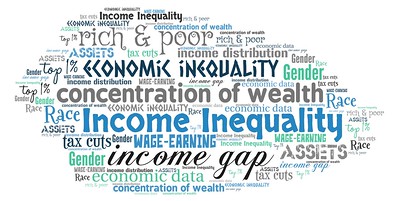Module14: Poverty and Economic Inequality
Section outline
-

This chapter explores how the U.S. government defines poverty, the balance between assisting the poor without discouraging work, and how federal antipoverty programs work. It also discusses income inequality—how economists measure inequality, why inequality has changed in recent decades, the range of possible government policies to reduce inequality, and the danger of a tradeoff that too great a reduction in inequality may reduce incentives for producing output.
Upon completion of this module, you will be able to:
- Explain economic inequality and how the poverty line is determined
- Analyze the U.S. poverty rate over time, noting its prevalence among different groups of citizens
- Explain the poverty trap, noting how government programs impact it
- Identify potential issues in government programs that seek to reduce poverty
- Calculate a budget constraint line that represents the poverty trap
- Identify the antipoverty government programs that comprise the safety net
- Explain the safety net programs' primary goals and how these programs have changed over time
- Discuss the complexities of these safety net programs and why they can be controversial
- Explain the distribution of income, and analyze the sources of income inequality in a market economy
- Measure income distribution in quintiles
- Calculate and graph a Lorenz curve
- Show income inequality through demand and supply diagrams
- Explain the arguments for and against government intervention in a market economy
- Identify beneficial ways to reduce the economic inequality in a society
- Show the tradeoff between incentives and income equality
To achieve these objectives: [Edit these items to match your resources and activities.]
- Read the Module 14 Introduction
- Read Chapter 14 in the course textbook, Microeconomics.
- Complete Module 14 Discussion Forum.
- Complete 14 Quiz.
- For course instructors, list any other reading assignments here. [Include all reading assignments here that are outside of Moodle. Be as
concise as possible. More information can be included in the
third-party section below, if necessary.]
- Complete the [specific activities in the module. Include all in the order you want them completed.]
Module Pressbooks Resources and Activities
You will find the following resources and activities in this module at the Pressbooks website. Click on the links below to access or complete each item.
-
Chapter 14 of Introduction to Microeconomics
-
Module 14 In Class Group Activity (hide from students)
Course SLO 1: Identify the basic economic principles that serve as the foundation of economic analysis
Course SLO 6: Discuss the basic theories behind consumer and producer behavior
Module SLO: 14.1.1 – Explain economic inequality and how the poverty line is determined.
Review the U.S. Poverty Line published by the U.S. Department of Health and Human Services. We see in Section 1 of this chapter that the poverty line defines the income that one needs for a basic standard of living. For this discussion, your task is to:
1. Explain how the poverty line is determine and what these thresholds represent in your own words
2. Then explain some challenges we can expect to run into establishing a nationwide (in this case the lower 48 states) poverty line.
Instructor Notes:
One of the primary challenges is that there are different costs of living throughout the country. Someone living in Seattle needs more money to maintain the same standard of living than someone living in Harrison, AR due to goods and services being more expensive. This can create challenges and may even be misleading when discussions arise about the poverty rate for an area.
Note: This link is for 2023.
Background Colour
Font Face
Font Kerning
Font Size
Image Visibility
Letter Spacing
Line Height
Link Highlight
Text Colour
